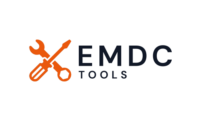EMDC.tools is a showcase of different products, strategies, tools and courses developed by some of the 300+ organisations that have participated in EMDC over the last 15 years. (read more about EMDC here)
There’s a saying that explains, “if you only have a hammer, everything looks like a nail”, which means that often the tools we have available and are most familiar with can affect how we look at a task. When it comes to helping people engage with the Bible there are many different tools we can use. Choosing the best ones for the task depends on the situation and the resources we have available.
EMDC.Guide is a site that helps you think about your unique ministry situation and some of the things that will help or hinder people in using the Bible. The EMDC.blog provides further thought about some issues, and introduces some of the available courses and communities available within the EMDC.academy.
The tools are simply arranged in alphabetical order. We strongly recommend that you use the search function at the top of the page. It is not a good idea to browse through all the tools. The one that is most useful to you might be right at the end of the list, and your time is a precious gift from God.
Find the search section. This might look different depending if you are on a phone or laptop. If your search isn’t finding much try pressing the Rest button
There are three different ways to search:
- The simple search bar that looks like this: This is the first way but usually not the best.

Type a word in here to look through all the tools for that word. For example, if you want a tool that mentions Ezra, just type Ezra.
2. Categories. This will help you to choose by decreasing the number of tools you are looking at.
Description of categories.
Media type. for example, video, print, audio a comic or an app.
Scripture. Many tools reference particular passages of Scripture. This category includes those that do and what type, for example a particular book of the Bible or a chronological presentation.
Audience. Many tools are created with a particular audience in mind, such as children, women, followers of another religion.
Artistic expression. Things such as dance, drama music, and storytelling.
Ministry and outreach. These tools usually link to organisations that have some kind of outreach or discipleship programme.
Software. Apps and programmes that help in different ways.
Understanding Scripture Engagement. This will have planning tools and links to further training.
Distribution method. Ideas that specifically help to distribute Scripture be they gadgets or apps or strategies.
3. Tags. This is the third way and gives you suggestions for words to look for. All the tools have been tagged with key phrases such as which of the 8 conditions for Scripture Engagement they help to fulfil. Or another example is tools that can be multilanguage.
Once you have decided on a Tool or Tools, now is the time to click the ‘contact resource provider’ button. We will then provide you with an email address to contact. Please note that we have done our best to make sure the Tools are accurately described. These descriptions are mostly provided by the owner of the tool, and we have made every effort to make sure they are accurate. However, we cannot guarantee the quality or the resources or the level of support you will receive. If you can’t find what you are looking for write using the contact form and tell us about your situation and we’ll see if we can help further.
Owners of the individual Tools may ask you to enter into some kind of legal agreement. Make sure you understand these agreements before you commit to them.
